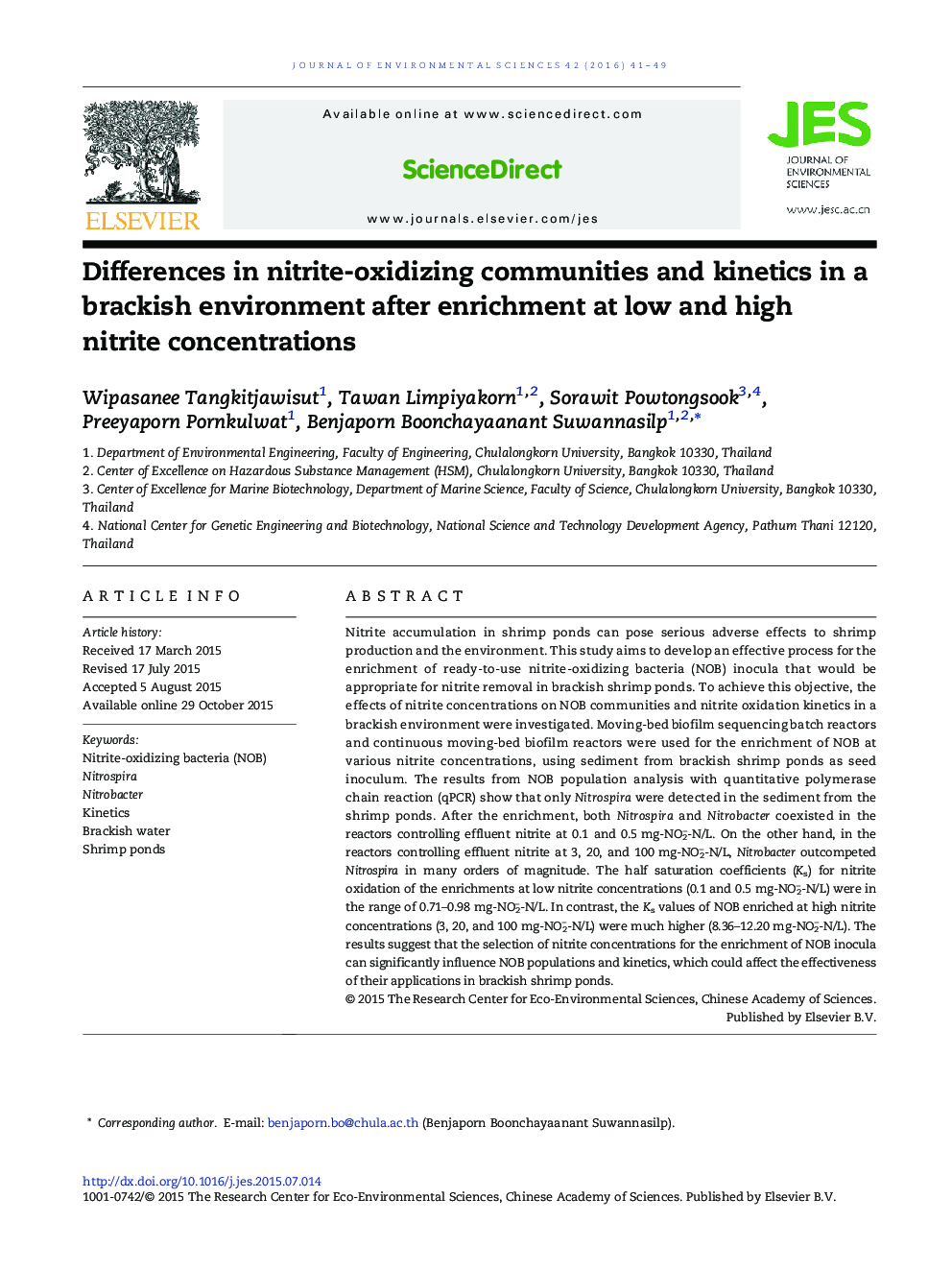| Article ID | Journal | Published Year | Pages | File Type |
|---|---|---|---|---|
| 4453788 | Journal of Environmental Sciences | 2016 | 9 Pages |
Nitrite accumulation in shrimp ponds can pose serious adverse effects to shrimp production and the environment. This study aims to develop an effective process for the enrichment of ready-to-use nitrite-oxidizing bacteria (NOB) inocula that would be appropriate for nitrite removal in brackish shrimp ponds. To achieve this objective, the effects of nitrite concentrations on NOB communities and nitrite oxidation kinetics in a brackish environment were investigated. Moving-bed biofilm sequencing batch reactors and continuous moving-bed biofilm reactors were used for the enrichment of NOB at various nitrite concentrations, using sediment from brackish shrimp ponds as seed inoculum. The results from NOB population analysis with quantitative polymerase chain reaction (qPCR) show that only Nitrospira were detected in the sediment from the shrimp ponds. After the enrichment, both Nitrospira and Nitrobacter coexisted in the reactors controlling effluent nitrite at 0.1 and 0.5 mg-NO2−-N/L. On the other hand, in the reactors controlling effluent nitrite at 3, 20, and 100 mg-NO2−-N/L, Nitrobacter outcompeted Nitrospira in many orders of magnitude. The half saturation coefficients (Ks) for nitrite oxidation of the enrichments at low nitrite concentrations (0.1 and 0.5 mg-NO2−-N/L) were in the range of 0.71–0.98 mg-NO2−-N/L. In contrast, the Ks values of NOB enriched at high nitrite concentrations (3, 20, and 100 mg-NO2−-N/L) were much higher (8.36–12.20 mg-NO2−-N/L). The results suggest that the selection of nitrite concentrations for the enrichment of NOB inocula can significantly influence NOB populations and kinetics, which could affect the effectiveness of their applications in brackish shrimp ponds.
Graphical abstractFigure optionsDownload full-size imageDownload as PowerPoint slide
